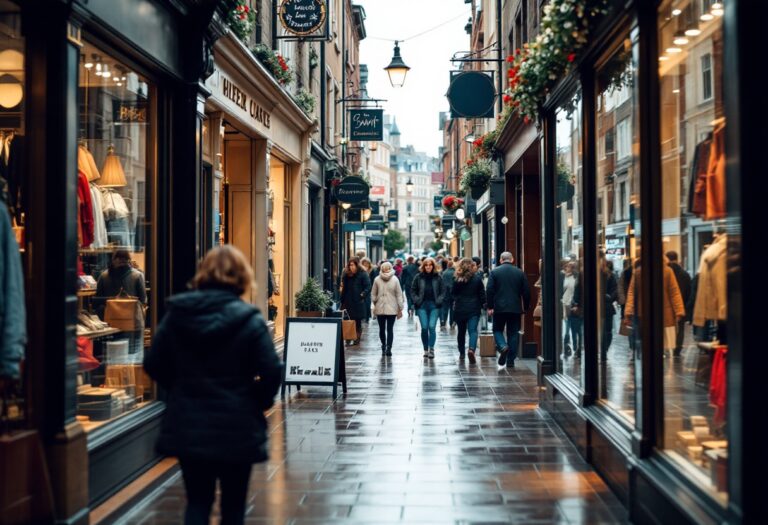New businesses emerge as vacancy rates decline across shopping centres in Aberdeen.

Topics covered
In a promising turn of events for Aberdeen’s retail sector, the city’s shopping centres are experiencing a notable decline in vacancy rates. Recent data reveals that the average vacancy rate across all four shopping centres has dropped to 13.4%, a significant improvement from 16.4% recorded during the last census.
This positive trend is indicative of a revitalized shopping environment, with new businesses opening their doors and attracting customers.
Tracking the changes in Aberdeen’s retail landscape
Since the launch of our tracking initiative in June 2023, we have closely monitored the high streets and shopping centres of Aberdeen.
Our latest survey, conducted in November 2024, shows a steady decline in vacancy rates, reflecting the efforts made by centre management to fill previously empty units. For instance, Union Square, the most occupied centre, has achieved its lowest vacancy rate of just 4.8%, with only four out of 84 units remaining vacant.
In addition to Union Square, the Trinity Centre has also seen a significant reduction in its vacancy rate, dropping from a staggering 37.04% to 21.4% over the past year. Centre manager Kenny Bruce expressed optimism about upcoming openings, emphasizing the importance of local ownership in driving positive changes within the centre. “We are pushing really hard to bring new businesses not just to the centre but to our city,” he stated, highlighting the community’s commitment to revitalizing the retail landscape.
Independent businesses thrive amidst changes
Our analysis of independent versus chain businesses reveals that streets like Thistle Street and Chapel Street are thriving, with over 90% of the businesses being independent. This trend is encouraging, as it fosters a unique shopping experience and supports local entrepreneurs. Furthermore, the addition of Rose Street to our tracking has provided a more comprehensive view of the West End’s shopping streets, showcasing the diverse offerings available to consumers.
Despite the overall positive trends, some areas have experienced fluctuations in vacancy rates. Notably, Little Belmont Street has seen its vacancy rate rise to 25%, attributed to the closures of local establishments. However, the overall average vacancy rate for Aberdeen has decreased slightly to 19.5%, down from 20.71% when tracking began.
The evolving retail mix in Aberdeen
As we continue to monitor the retail landscape, food and drink establishments remain the most popular unit type, comprising 33.8% of the total units tracked. This shift in consumer preference has led to a growing number of restaurants and cafes, surpassing traditional retail shops. In our previous census, shopping units accounted for 31.3% of the high street, indicating a significant change in consumer habits.
While the retail environment is evolving, notable closures have also occurred, such as the Royal Bank of Scotland on Union Street. Additionally, TK Maxx has relocated, paving the way for Marks and Spencer to expand its footprint. These changes reflect the dynamic nature of the retail sector in Aberdeen, where adaptability is key to survival.
As we move forward, our commitment to providing accurate and timely updates on the retail landscape remains steadfast. We encourage the community to share any information regarding openings or closures to ensure our data remains current. Together, we can continue to support Aberdeen’s vibrant shopping scene and foster a thriving local economy.





Leave a Reply